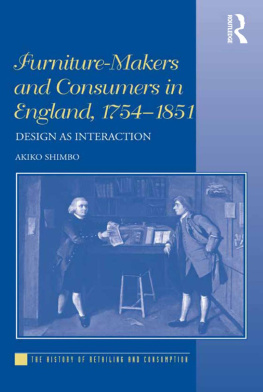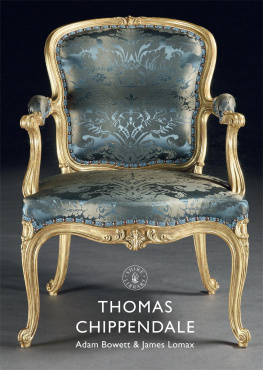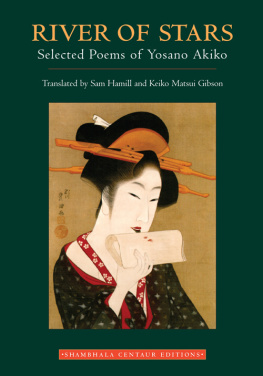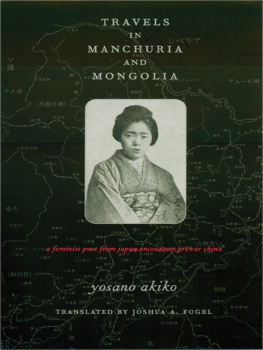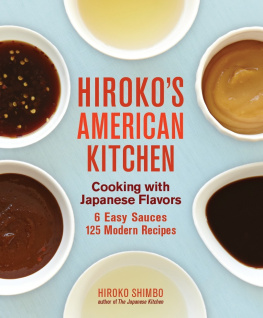First published 2015 by Ashgate Publishing
Published 2016 by Routledge
2 Park Square, Milton Park, Abingdon, Oxon OX14 4RN
711 Third Avenue, New York, NY 10017, USA
Routledge is an imprint of the Taylor & Francis Group, an informa business
Copyright 2015 Akiko Shimbo
Akiko Shimbo has asserted her right under the Copyright, Designs and Patents Act, 1988, to be identified as the author of this work.
All rights reserved. No part of this book may be reprinted or reproduced or utilised in any form or by any electronic, mechanical, or other means, now known or hereafter invented, including photocopying and recording, or in any information storage or retrieval system, without permission in writing from the publishers.
Notice:
Product or corporate names may be trademarks or registered trademarks, and are used only for identification and explanation without intent to infringe.
British Library Cataloguing in Publication Data
A catalogue record for this book is available from the British Library
The Library of Congress has cataloged the printed edition as follows:
Shimbo, Akiko.
Furniture-makers and consumers in England, 17541851 : design as interaction / by Akiko Shimbo.
pages cm. (The history of retailing and consumption)
Includes bibliographical references and index.
ISBN 978-0-7546-6928-9 (hardcover) 1. Furniture industry and trade Great Britain History. 2. Furniture making Great Britain History. 3. Consumption (Economics) Social aspects Great Britain History 4. Consumers Great Britain History. I. Title.
HD9773.G72S45 2015
338.4768410094209034dc23
2015019041
ISBN: 9780754669289 (hbk)
ISBN: 9781315583686 (ebk)
Acknowledgements
Every book has its own history. As for this book, the beginning of the story is the luckiest part, because my PhD supervisor was Penelope J. Corfield. No words can express my gratitude for her advice and encouragement. She read an early draft of the introductory chapter of this book and gave me valuable suggestions. This book is dedicated to her.
I owe a debt of gratitude to my PhD examiners, Negley Harte and John Styles, too. Their comments on my work at the viva encouraged me to pursue my research. I would also like to thank the staff in the History Department of Royal Holloway, University of London, during the four and a half years of my PhD, especially Amanda Vickery and Matthew Grimley for their helpful comments on early drafts of two chapters of my thesis. Prior to my PhD, Martin Francis and Hannah Greig gave me comments on my short essays, and Heather Mustard at the Language Centre gave me advice on English language. The seminar on British History in the Long Eighteenth Century, at the Institute of Historical Research, University of London, was my workshop, where I have learnt many things and met many people. I especially thank Tim Hitchcock for guidance on searching for primary sources at the beginning of my study, and Arthur Burns, Julian Hoppit, Susan Whyman, Mary Clare Martin and Giorgio Riello for advice, references and comments.
To complete this book, access to historical sources was essential. I am grateful to the following archives, libraries and museums for allowing me to read their manuscripts, books and illustrations: The British Library; The British Museum; The Centre for Kentish Studies; City of Westminster Archives Centre; The Guildhall Library; Lancashire Record Office; London Metropolitan Archives; The Senate House Library, University of London; The National Art Library, the Archives of Art and Design, and the Prints & Drawing Room, all at the Victoria and Albert Museum; and Winterthur Museum Library. Some of them, as listed, permitted me to reproduce images. In particular, London Metropolitan Archives generously waived the reproduction fees.
Yet this book would not have existed without the support of two experts in the publication of history books: Emily Yates, Senior Commissioning Editor, and Thomas Gray, Publisher, both of Ashgate Publishing. When I contacted them, I found that they were progressive editors who did not care about authors careers and nationalities. I especially thank Emily for having waited such a long time. I also appreciate the support and helpful comments of two anonymous referees. In particular, one of them read the earlier drafts thoroughly and kindly provided me with a detailed list of corrections. I am also grateful to the series editor Gareth Shaw for giving me valuable comments on the final draft and including my book in The History of Retailing and Consumption series, which is a great honour for me. I would also like to thank two editors, Sarah Charters, Senior Editor at Ashgate, for organising the publication process and Linda Cayford for her thorough check of, and helpful comments on, my final manuscript, as well as Tom Norton for indexing and the staff of Ashgate marketing department for their help.
In the final stage of writing, I had great help from Muriel Beaver. She read through the final draft of the book, pointed out mistakes in my English and gave me advice on improving it. I also thank Michael Marsden for having checked my English in my thesis and giving me advice. Any mistakes, however, remain my own.
Thanks also go to all my friends from the Corfield School; in particular, advice from Takashi Ito, Zeta Moore and Xabier Lamikiz helped me at every stage of my PhD. Other friends at Royal Holloway, especially Jamie Gilham, Clare Owen, Po-Wah Yau, Karen Yuen, and Sue Silk and her family kindly took care of this difficult Japanese person. I thank them all.
Back in Japan, apart from my areas of social and cultural history, I have had opportunities to join a wide range of academic communities, including economic, urban, design and gender history. Thankfully, prior to my PhD in the UK, I had learnt a wide range of disciplines and methodologies from Tadashi Nakanos lectures and seminars at Waseda University, covering subjects from British and European social, economic, urban and family history to worldwide historical demography and historical anthropology. Along with Maki Omoris gender history course, these provided a basis for my study. In addition, Emi Konishi provided me with guidance on researching in the UK and recommended studying with Professor Corfield. In my earlier study on artisans, I was influenced by a labour historian, Takao Matsumura and a social and economic historian, Toshio Kusamitsu. I would like to thank all of them.


